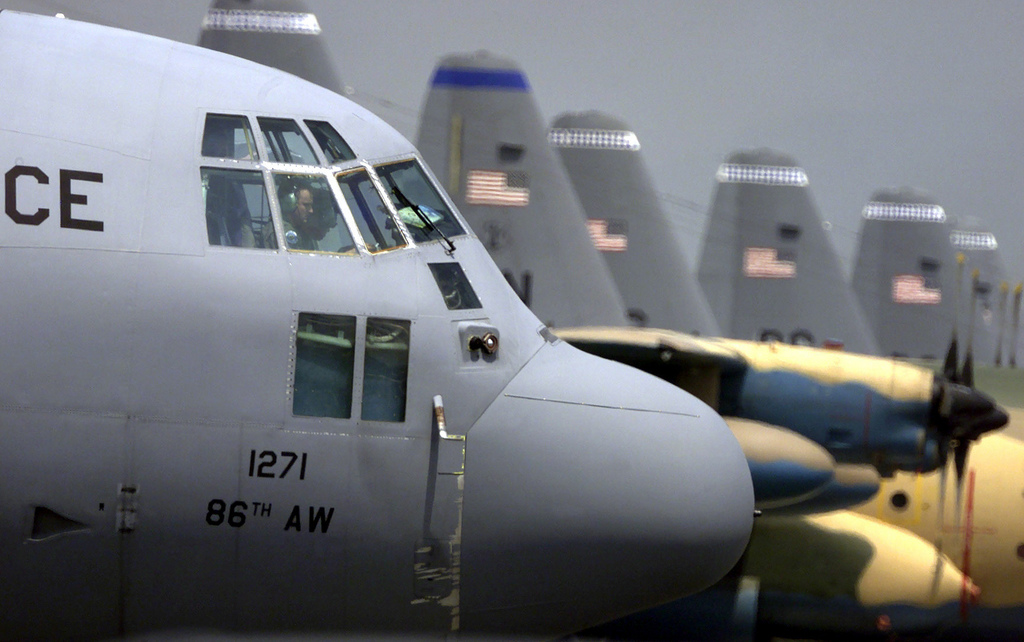
Bare Bases on Foreign Lands – The First Step in Defense Efficiency?
Depending on whom you ask, the United States currently maintains a force of nearly 300,000 troops stationed overseas. Although a majority of these individuals are fighting in the War on Terror, the US also actively maintains fully staffed bases in relatively stable and friendly areas such as Germany, Australia, Norway, and Italy. When considering this fact in the light of imminent budget cuts, a logical area of improvement would be the surgical removal of permanent troop installations in non-critical areas.
Nearly one half (approximately 135,000 acknowledged troops) are stationed on non-warzone foreign bases and in international waters. It has been estimated that the maintenance of these troops and bases cost $250 billion annually – a significant number for any operation.
If the vast majority of these troops are not currently involved in warzone operations, what purpose do they serve to the US defense policy? For the most part, they act as a political psychological show of power and confidence in their respective areas. They demonstrate that the United States can and will become active in engagements against our allies. In addition, it has been argued that the troops can act as a quick reaction force in the event of nearby conflicts such as in the Middle East. Despite these assurances, their critical role has often times been overstated by certain groups.
For all the seemingly positive arguments in favor of this presence, it is not as clear cut as one might initially imagine. First, the existence of these troops is rarely developed to accommodate changing geopolitical conditions. The size and continuation of these bases are static throughout the years, despite a shifting regional focus. In many parts of Europe, they are considered a Cold War relic, regardless of their continuous staffing.
Second, the “quick reaction force” that staffs these bases is not always combat ready. If regional conflict were to erupt in the area, rapid deployment forces such as the Army Rangers and Airborne Corps would be more suitable for the conditions that the typical troops found at the bases. These units are capable of deploying in 18 hours regardless of the mission.
Lastly, US troops simply aren’t always needed in these areas. If one keeps in mind that rapid deployment forces would be used for mid to large scale operations in the Middle East, European based conflicts could be handled with ease by our NATO allies. If troops were eventually required to enter the area, our fully maintained bases would not have a distinct advantage over other forms of establishments.
Converting these fully operational bases into bare bases would be a valid streamlining measure that would continue our operational readiness for valid conflicts as well as save a significant amount of money for more pressing matters. A fully implemented bare base structure would utilize a military caretaker staff during peacetime to ensure that the base “[has] minimum essential facilities to house, sustain, and support operations to include… a stabilized runway, taxiways, and aircraft parking areas.” If required, combat and support units would be capable of deploying to the base during wartime with little to no warning or infrastructure development required. For many of our bases in stable regions, this would remove millions of dollars spend on maintaining full staffed structure that may never be used.
A potential compromise to a full bare base structure could include the development of more joint military facilities. These bases could prove to be fruitful for diplomatic relations in areas where a strong US presence has been called into question by the local population. Bases maintained by a foreign staff could also ensure that the United States doesn’t bear the brunt of costs associated with a fully equipped station. Through the development of bases like those created in Bulgaria, the US could find a middle ground that ensures readiness as well as economic and political stability.
The strong presence of United States armed forces throughout the rest of the world is a poor reflection of our 21st century capabilities. More often than not, the full staffing of these establishments does not serve as a direct and significant interest to our defense or foreign relations. By converting many of these bases to a joint or bare base structure, we could ensure that our budget is utilized to its fullest potential, all the while improving the diplomatic relations and foreign readiness of our allies.






[…] Bare Bases on Foreign Lands – The First Step in Defense Efficiency? Adin Dobkin […]
Do have to say there is a lot of global waste, Last I looked there was some 40,000 odd US troops in Germany for which I see little if any use. By the time they get ready to react to conflict in Africa or the Middle East proper quick reaction forces in the US mainland would already be in the air on there way… The very least for fiscal responsibility most US army bases need to be pulled out, At least from Europe where there is no need beyond the CBG in Italy.